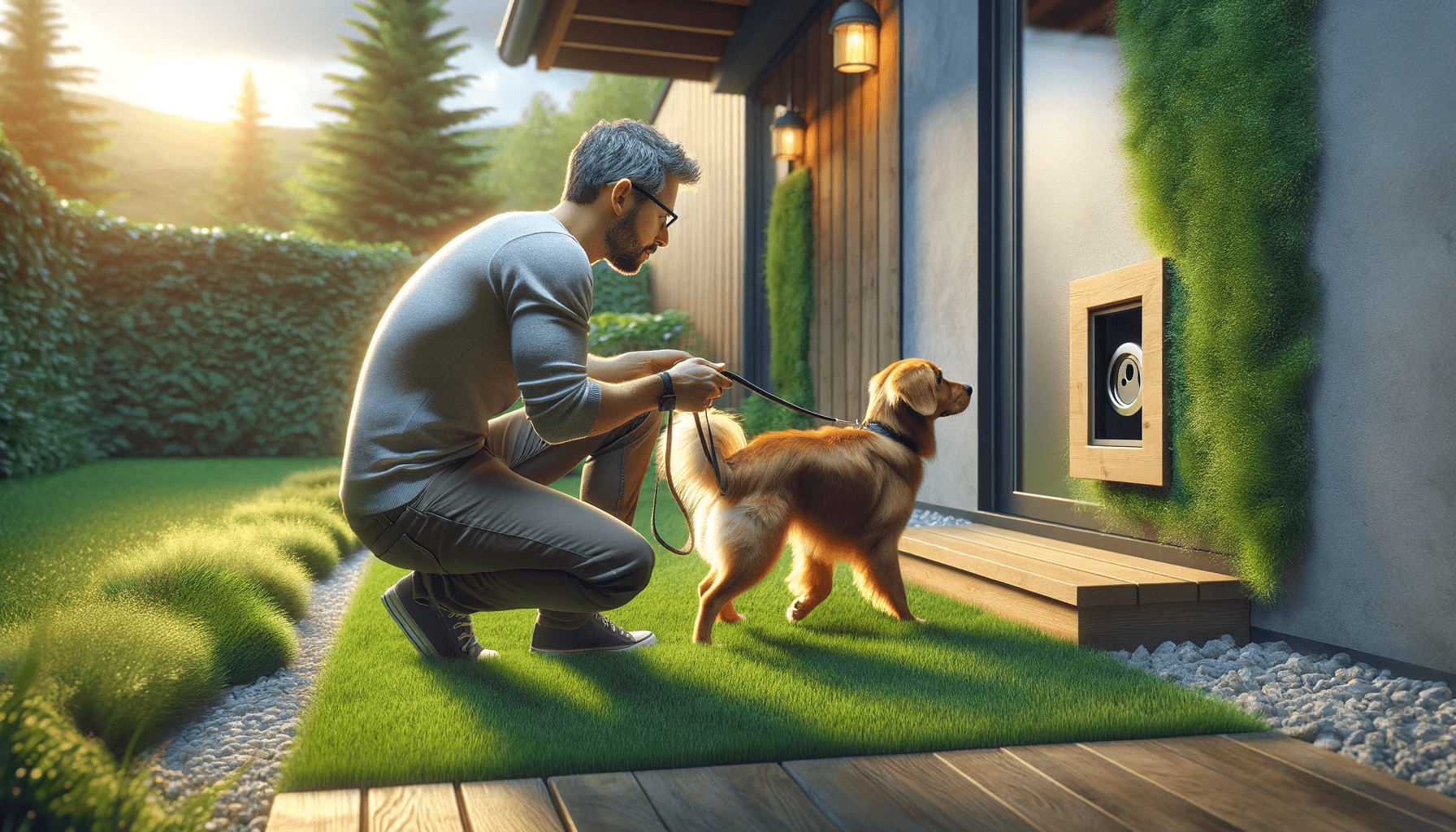Are you ready to become a dog obedience expert? Look no further!
This trustworthy guide will equip you with the knowledge and skills needed to train your furry friend safely and effectively.
With simple yet powerful techniques, you'll learn how to establish leadership, teach basic commands, and address any behavioral issues that may arise.
Get ready to embark on a journey of bonding and companionship with your canine companion.
Let's dive in!
Key Takeaways
- Leash training and recall training are essential techniques for ensuring obedient walking and safety.
- Positive reinforcement techniques, such as using rewards and clicker training, can create a positive and enjoyable training experience and establish a strong bond with the dog.
- Reward-based training benefits include increased motivation, behavior modification, clear and immediate feedback, and strengthening the bond between owner and dog.
- Consistency in training methods, establishing leadership and boundaries, socialization and behavioral training, and addressing behavioral issues promptly and effectively are all crucial for successful dog obedience training.
Basic Commands for Dog Obedience
To begin training your dog in basic obedience, start by using a gentle yet firm approach. Leash training techniques are essential for teaching your dog to walk obediently by your side. Begin by attaching a leash to your dog's collar and holding it with a relaxed grip. Encourage your dog to walk beside you by offering treats or praise. If your dog pulls or tries to go in a different direction, gently but firmly redirect them back to your side. Consistency is key in leash training, so practice this technique regularly until your dog learns to walk calmly on a leash.
Recall training methods are crucial for ensuring your dog's safety and obedience. Start in a quiet, controlled environment and call your dog's name in an upbeat tone. When your dog comes to you, reward them with treats or praise. Gradually increase the distractions and distance as your dog becomes more reliable in their recall. If your dog doesn't come to you immediately, avoid scolding or punishing them. Instead, go back to practicing in a less distracting environment and reinforce the recall command.
Positive Reinforcement Techniques
When it comes to training your dog, positive reinforcement techniques aren't only effective but also beneficial for both you and your furry friend.
By using rewards such as treats, praise, and playtime, you can motivate your dog to learn and obey commands.
These techniques focus on reinforcing desired behaviors rather than punishing unwanted ones, creating a positive and enjoyable training experience for your dog.
Reward-Based Training Benefits
Why should you consider using reward-based training techniques for your dog's obedience training?
Reward-based training techniques, such as clicker training, offer numerous benefits for both you and your furry companion.
One of the key advantages of clicker training is its ability to provide clear and immediate feedback to your dog. By using a clicker, you can mark the exact moment your dog performs the desired behavior, making it easier for them to understand what you're asking of them.
This precise communication helps accelerate the learning process and promotes better understanding between you and your dog.
Additionally, reward-based training techniques focus on positive reinforcement, allowing you to build a strong and trusting relationship with your dog.
By rewarding good behavior, you create a positive association and motivate your dog to repeat these desirable actions.
This approach not only makes training more enjoyable for your dog but also strengthens the bond between you.
Effective Reinforcement Strategies
Use Treat-Based Rewards to Reinforce Desired Behaviors
When it comes to effective reinforcement strategies in dog obedience training, using treat-based rewards can be highly beneficial. This positive reinforcement technique involves offering your dog a treat as a reward for displaying the desired behavior.
Here are some reasons why treat-based rewards are effective:
- Increased Motivation: Dogs are highly food motivated, so using treats as rewards can be a powerful incentive for them to learn and perform desired behaviors.
- Behavior Modification: Treat-based rewards can help shape and modify your dog's behavior by associating the desired behavior with a positive outcome.
- Clicker Training: Incorporating a clicker into treat-based rewards can enhance the effectiveness of the training process. A clicker is a small device that makes a distinct clicking sound, which serves as a marker to indicate the correct behavior.
Establishing Leadership and Boundaries
To establish leadership and boundaries in dog obedience training, start by clearly communicating your expectations and enforcing them consistently. Building trust is essential in this process. Dogs need to feel secure and confident in their relationship with their owner, which can be achieved by consistently setting expectations and following through with them.
Set clear boundaries and make sure your dog understands what's expected of them in various situations. When setting expectations, be clear and consistent with your commands. Use simple, concise language that your dog can easily understand. Use positive reinforcement to motivate and reward good behavior, and redirect or correct unwanted behavior when necessary. This will help your dog understand what's expected of them and what behavior is acceptable.
Consistency is key when it comes to establishing leadership and boundaries. Dogs thrive on routine and structure, so it's important to enforce the rules consistently. This means not allowing your dog to get away with unwanted behavior, even if it's cute or harmless in the moment. By consistently enforcing boundaries, your dog will learn to respect your authority and understand their place in the hierarchy.
Socialization and Behavioral Training
When introducing your dog to new environments and experiences, it's important to ensure proper socialization and behavioral training. This will help your dog develop good manners and become comfortable in various situations. To effectively socialize your dog, consider the following:
- Exposure to new environments: Introduce your dog to different places, such as parks, busy streets, and pet-friendly stores. This exposure will help your dog become familiar with different surroundings and reduce anxiety.
- Interaction with other dogs: Arrange playdates with well-behaved dogs to allow your dog to learn appropriate social skills. Observe your dog's body language during interactions to ensure they're comfortable and enjoying the experience.
- Desensitization techniques: Gradually expose your dog to stimuli that may trigger fear or anxiety, such as loud noises or unfamiliar objects. Use positive reinforcement and reward your dog for remaining calm. Over time, this will help them become less reactive and more confident.
Understanding canine body language is crucial during socialization and behavioral training. Pay attention to signs of stress, fear, or aggression, such as raised hackles, growling, or lip licking. By recognizing these signals, you can intervene appropriately and prevent potential conflicts.
Problem Solving and Troubleshooting
If your dog is exhibiting behavioral issues, addressing them promptly and effectively is crucial for successful dog obedience training.
One common issue that may arise during obedience training is fear and anxiety. Dogs may feel scared or anxious in certain situations, such as encountering new people or animals, or being in unfamiliar environments. It's important to address these fears and anxieties in a gentle and patient manner. Gradually expose your dog to the triggers that cause fear or anxiety, starting with low-intensity situations and gradually increasing the level of exposure. Provide positive reinforcement, such as treats or praise, when your dog shows signs of calmness or bravery.
Another issue that may arise is stubbornness and resistance. Some dogs may be more stubborn or resistant to training than others. In these cases, it's important to stay patient and consistent. Use positive reinforcement techniques, such as rewards and praise, to motivate your dog. Break down the training tasks into smaller, more manageable steps and gradually increase the difficulty level. Remember to always end training sessions on a positive note, even if progress is slow.
Maintaining Consistency and Long-Term Success
Consistently reinforcing desired behaviors is key to achieving long-term success in dog obedience training. To maintain consistency and ensure your dog's progress, it's important to establish reinforcement schedules and timing that align with your training goals.
Here are some tips to help you maintain consistency and achieve long-term success in your dog's obedience training:
- Set a reinforcement schedule: Establish a consistent schedule for rewarding your dog's desired behaviors. This helps your dog understand what's expected of them and reinforces their good behavior.
- Timing is crucial: Timing is everything when it comes to reinforcing desired behaviors. Reinforce your dog's good behavior immediately after they perform the desired action. This helps them make the connection between their behavior and the reward.
- Train beyond basic obedience: Once your dog has mastered basic obedience commands, it's important to continue training and challenging them. This helps to maintain their obedience skills and prevents regression.
Frequently Asked Questions
How Long Does It Usually Take to See Results From Dog Obedience Training?
It usually takes time and consistency to see results from dog obedience training. How to motivate your dog during training and common mistakes to avoid can greatly affect the speed of progress.
Can I Train My Dog Without Using Treats or Rewards?
Yes, you can train your dog without using treats or rewards. There are alternative training methods, such as training dogs with fear. However, it is important to be knowledgeable and experienced in these methods to ensure safety and effectiveness.
What Should I Do if My Dog Refuses to Obey a Command?
If your dog refuses to obey a command, it's important to handle their stubbornness effectively. Try using positive reinforcement, such as treats or rewards, to motivate them. Consistency and patience are key in overcoming resistance during dog training.
Are There Any Specific Training Techniques for Dogs With Aggression Issues?
When dealing with aggression issues in your dog, it is crucial to focus on aggression management and positive reinforcement alternatives. This guide provides effective techniques to address aggression and ensure safe obedience training.
How Often Should I Schedule Training Sessions With My Dog?
To fit training sessions into your busy schedule, aim for at least three sessions per week. Consistency is key, so choose specific times that work for you and stick to them. Remember to keep sessions short and focused for optimal results.
Conclusion
In conclusion, a trustworthy guide to safe dog obedience training emphasizes the importance of:
- Basic commands
- Positive reinforcement techniques
- Establishing leadership and boundaries
- Socialization
- Behavioral training
- Problem-solving
- Maintaining consistency for long-term success
By following these principles, you can:
- Build a strong bond with your dog
- Ensure a well-behaved and happy companion
Remember, professional training and experienced guidance can make all the difference in achieving successful dog obedience training.






